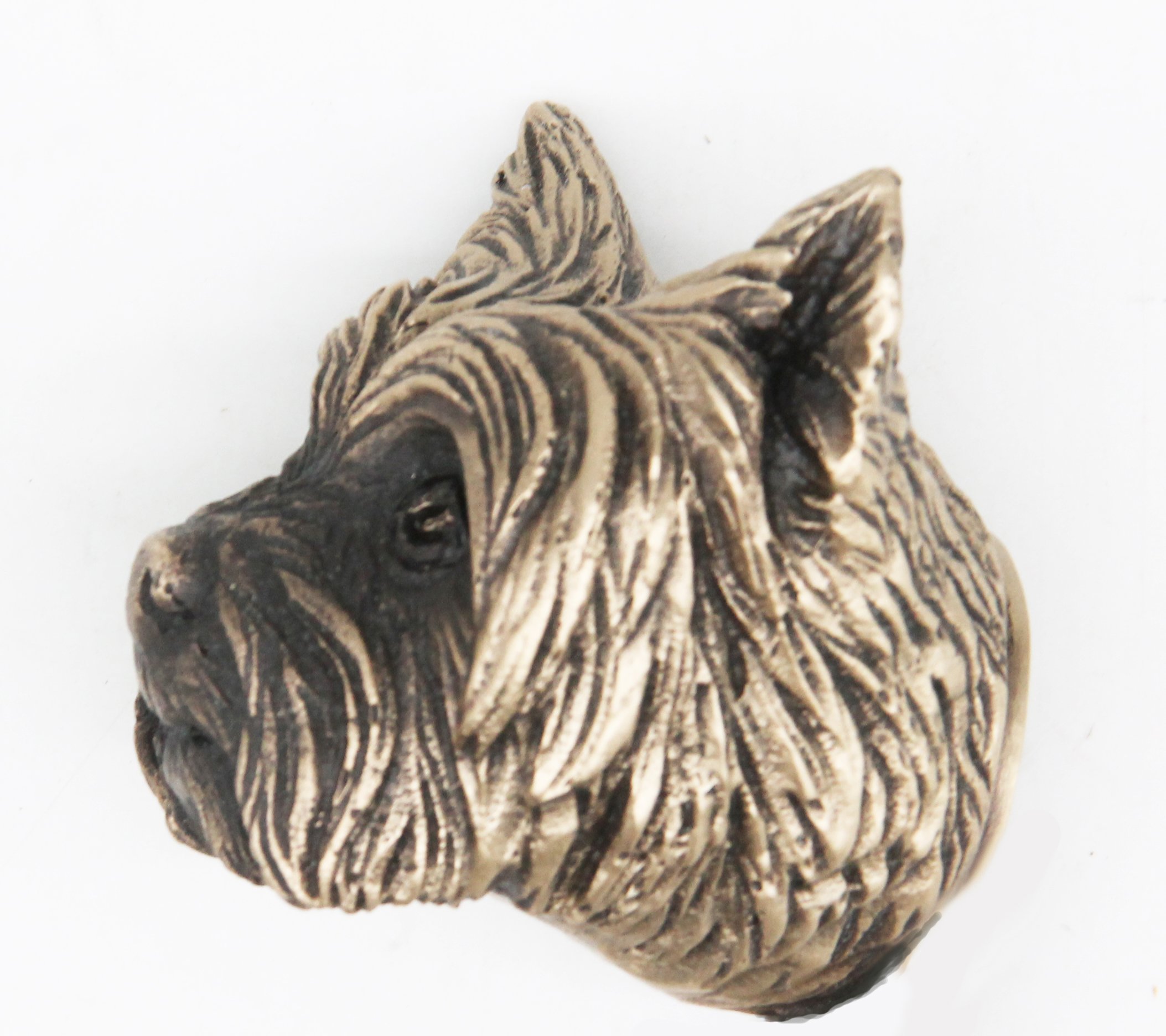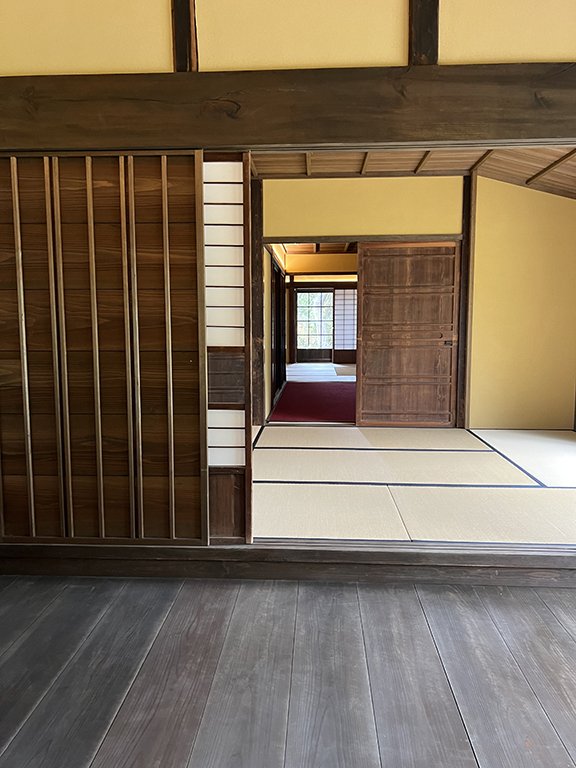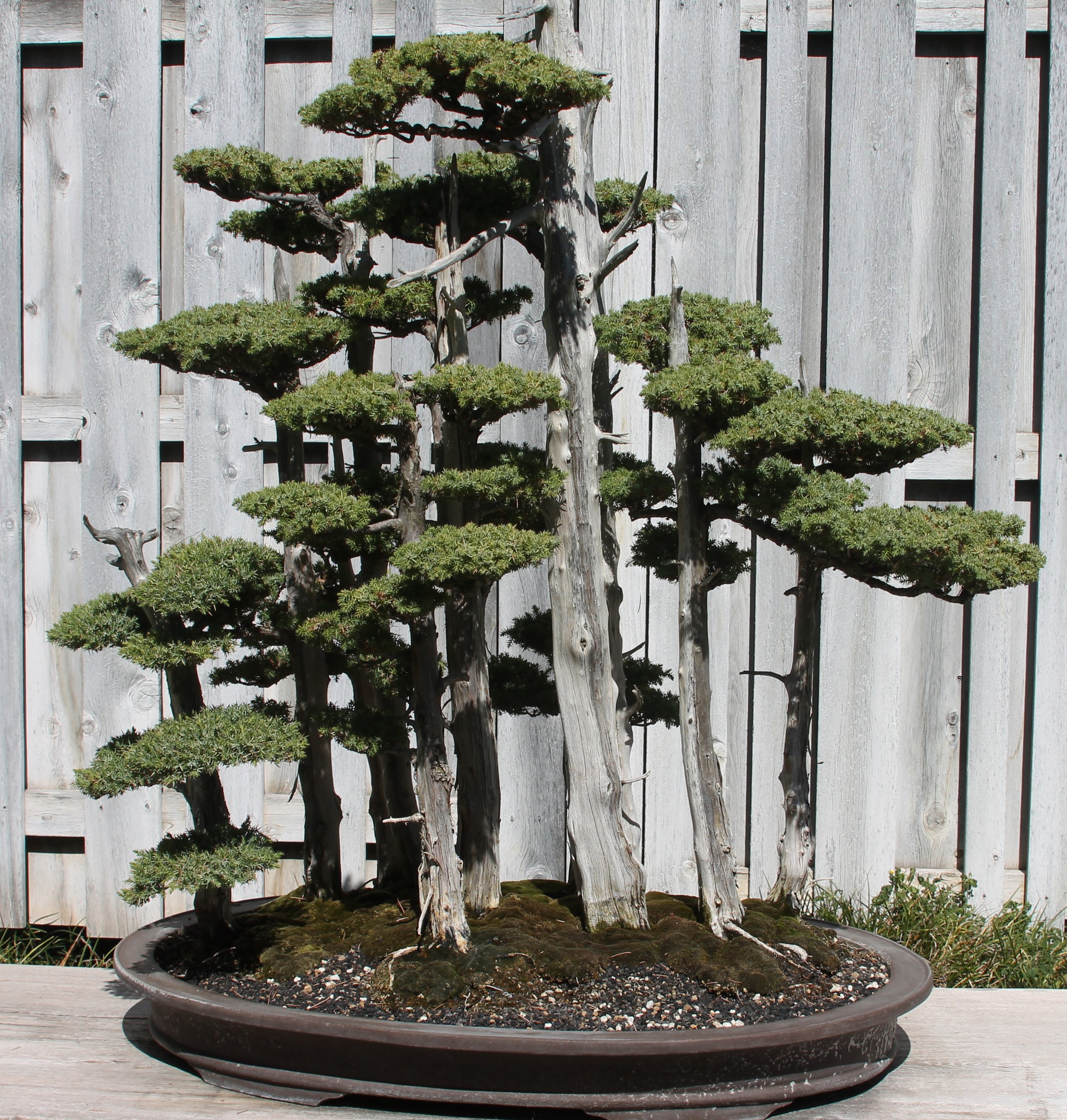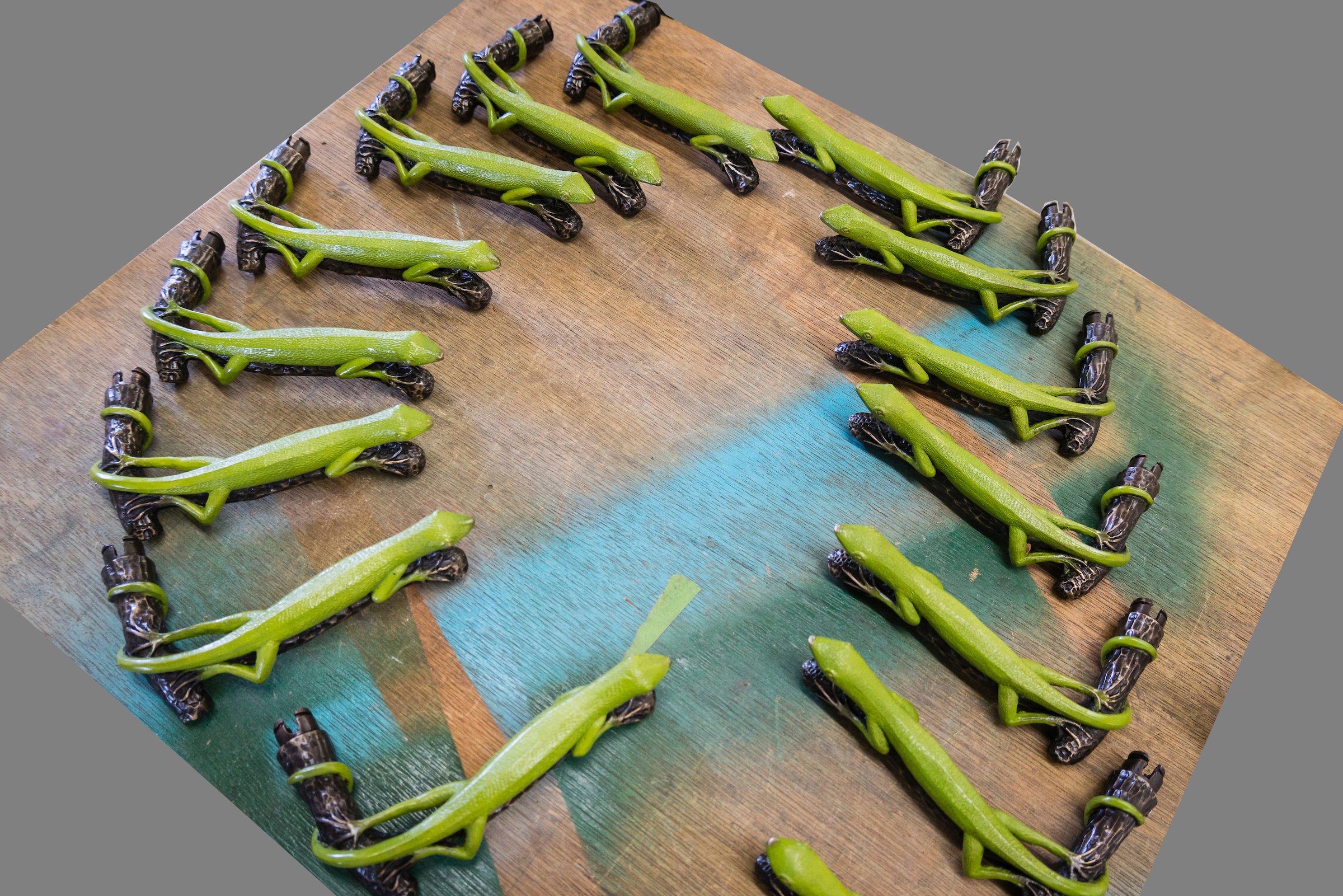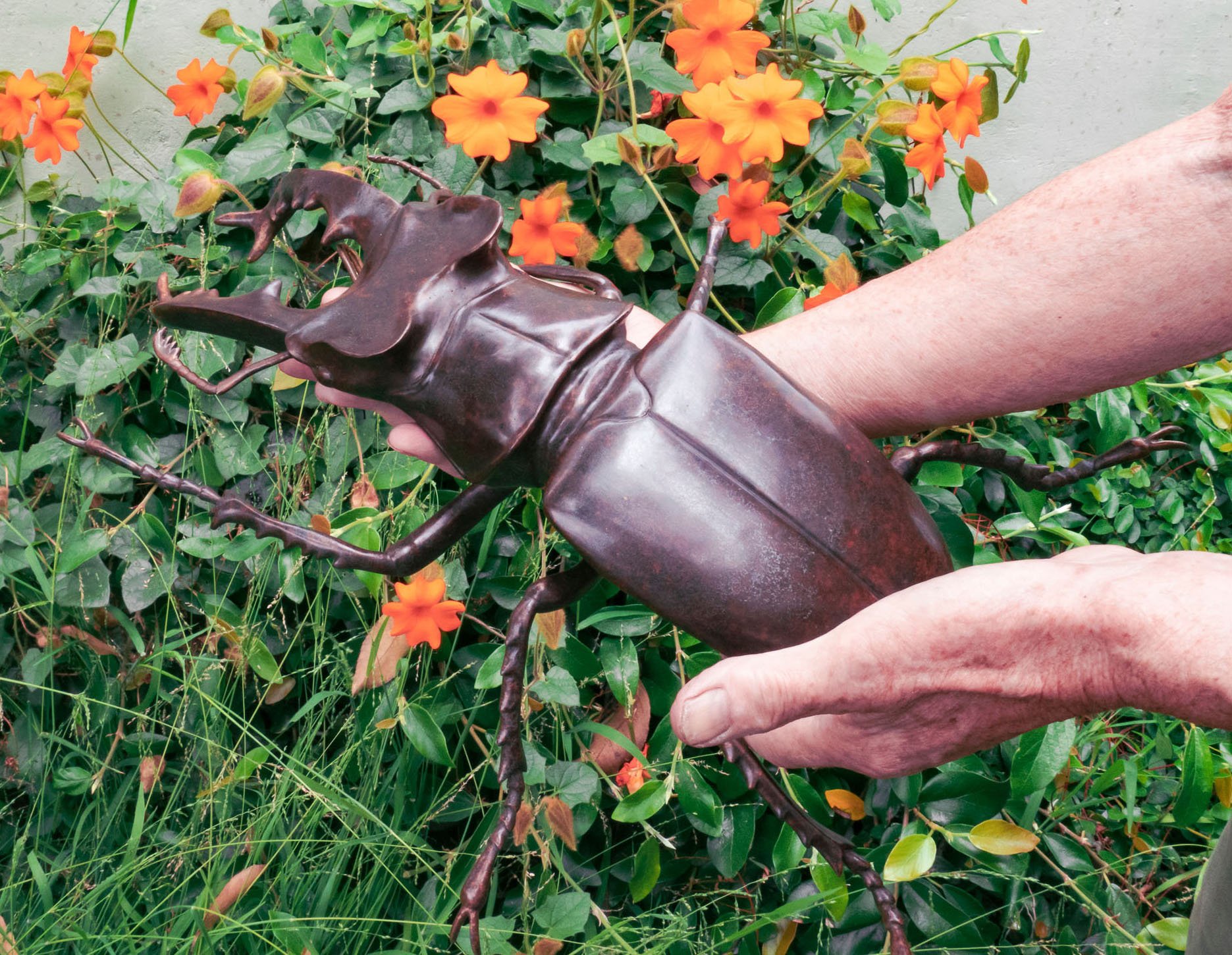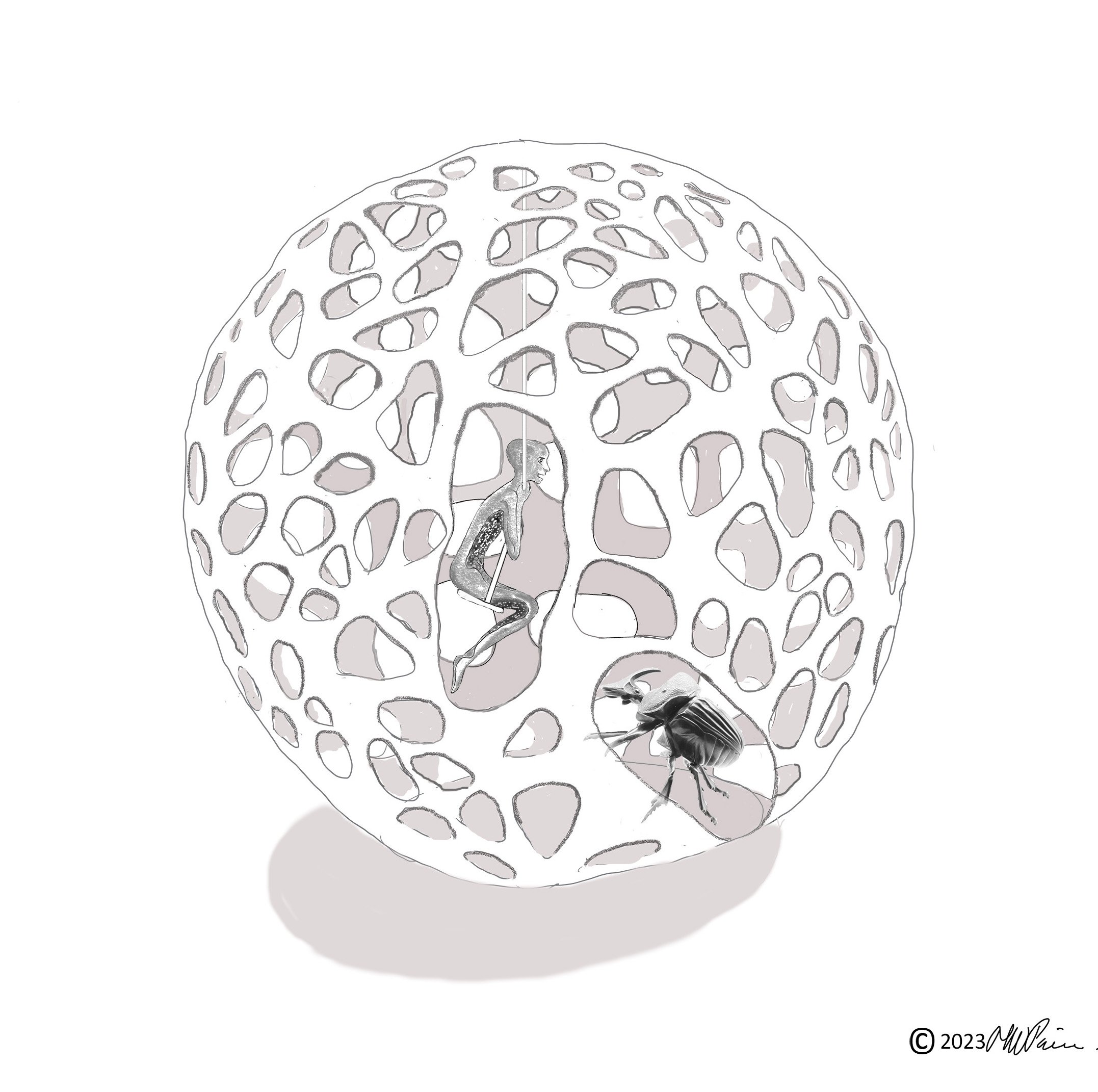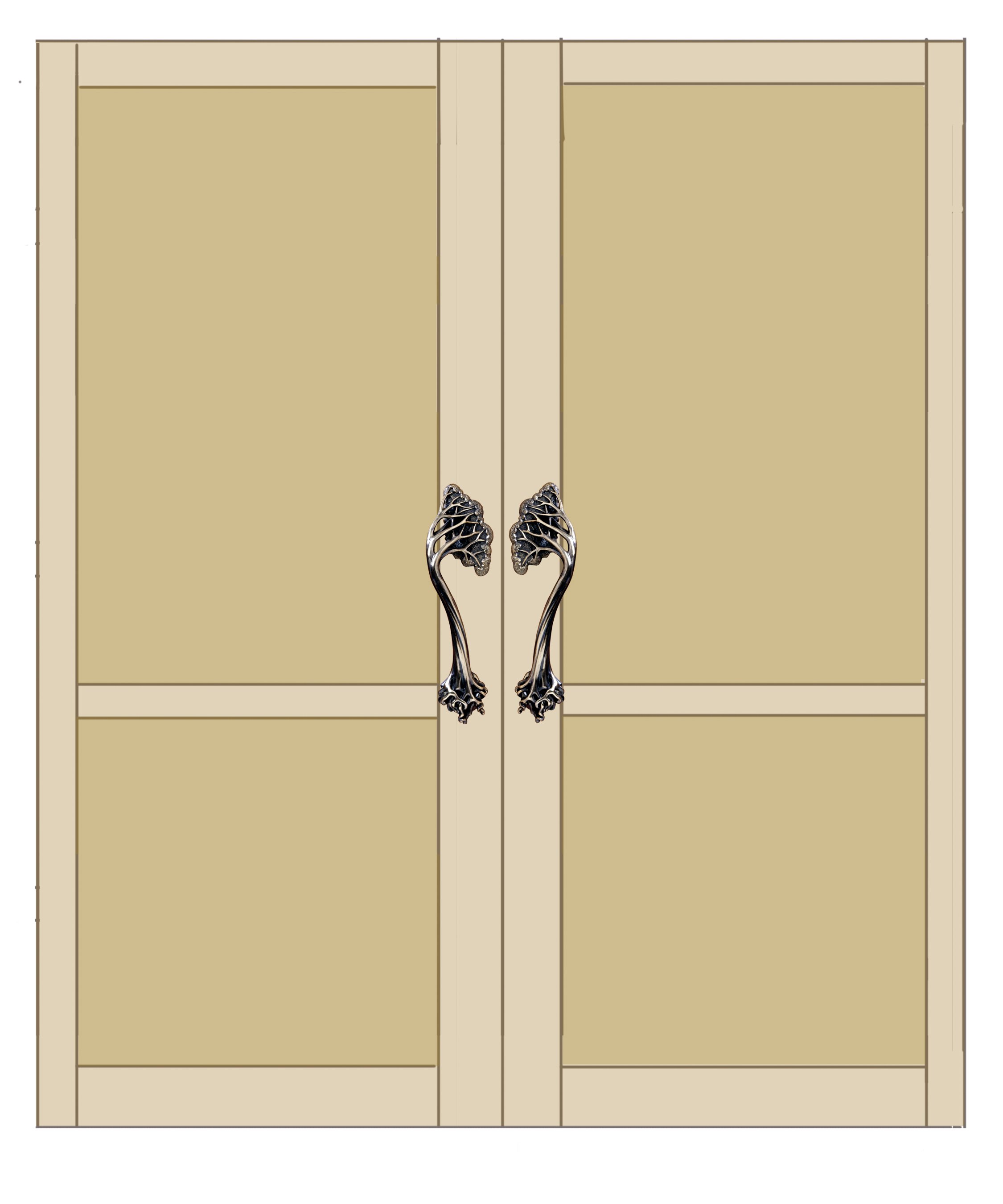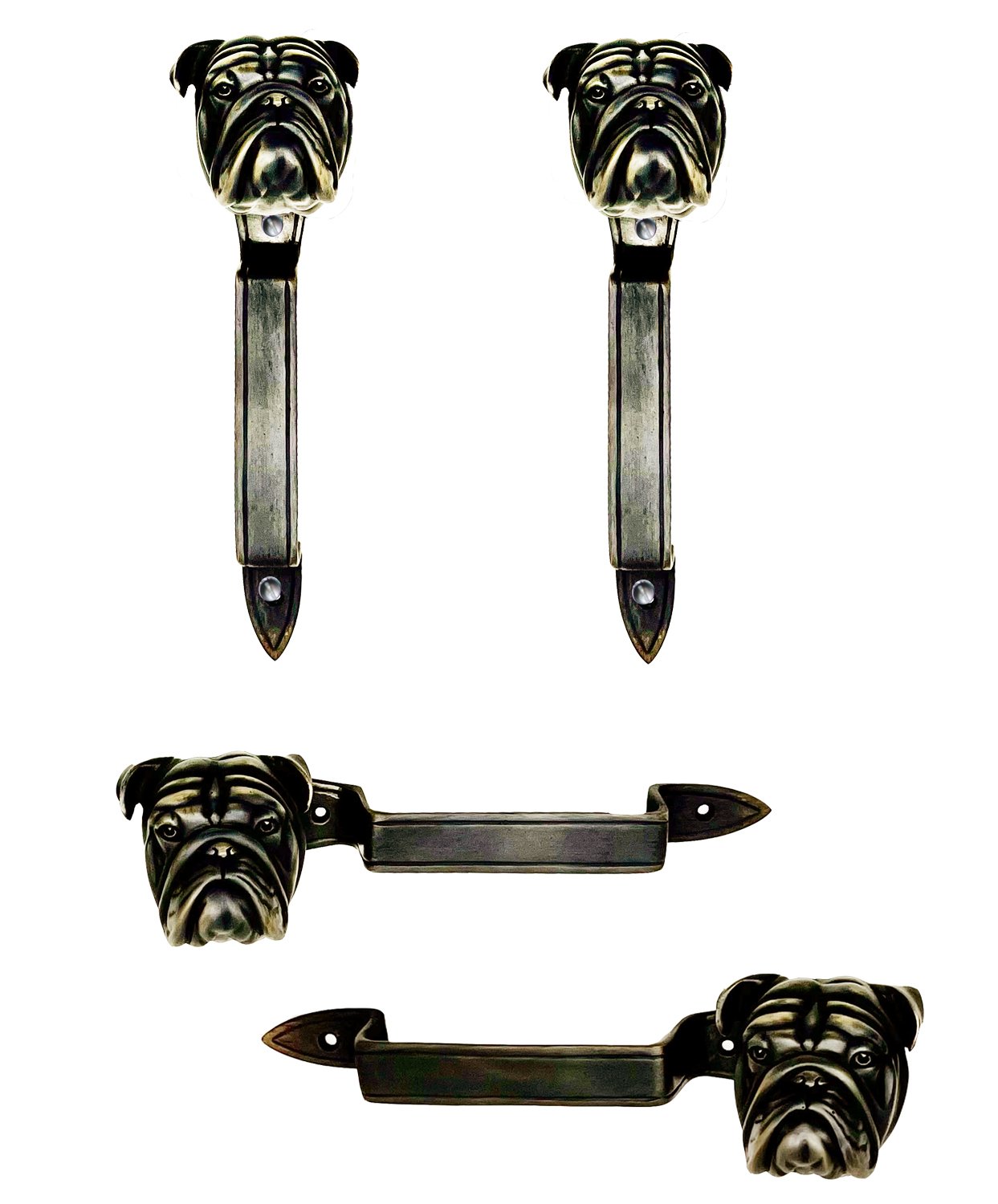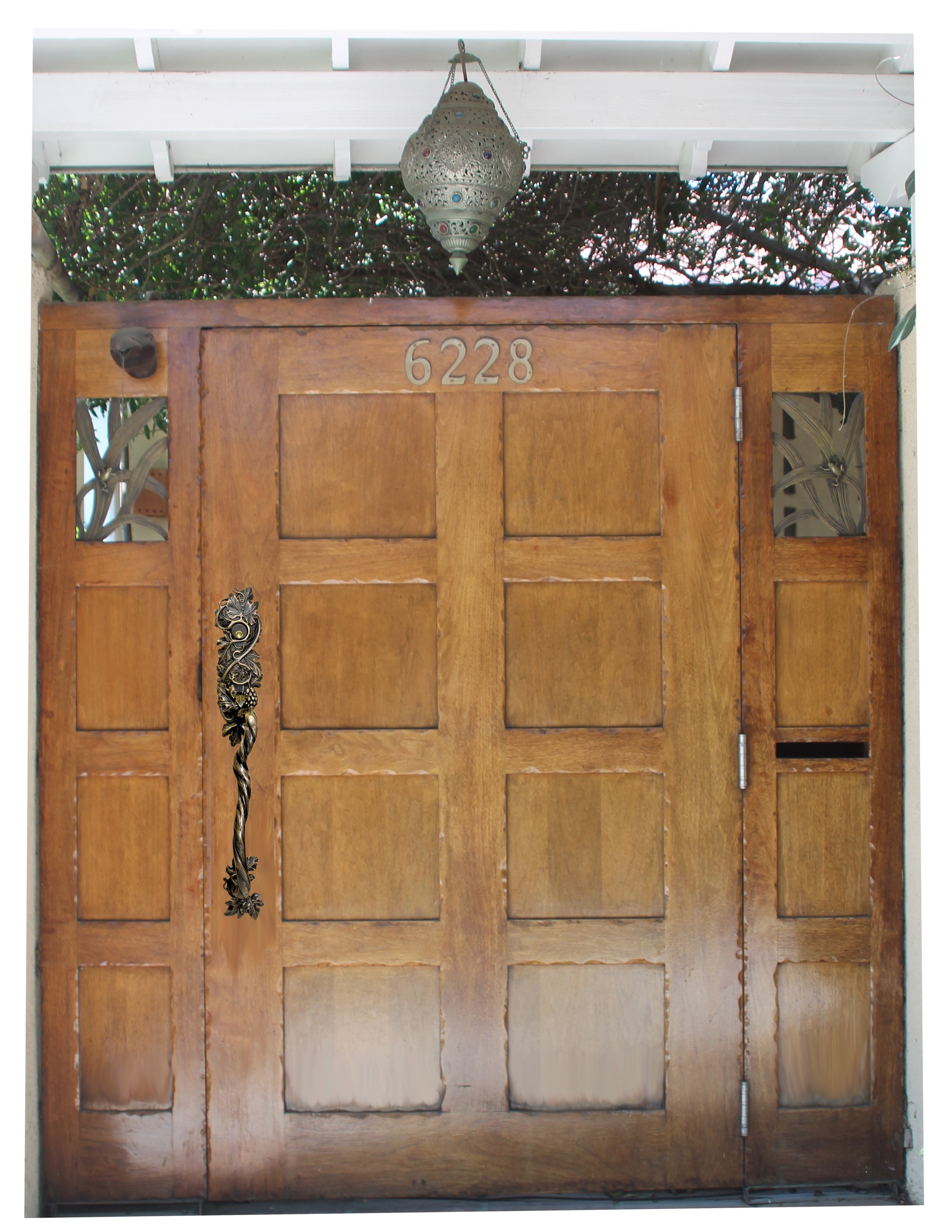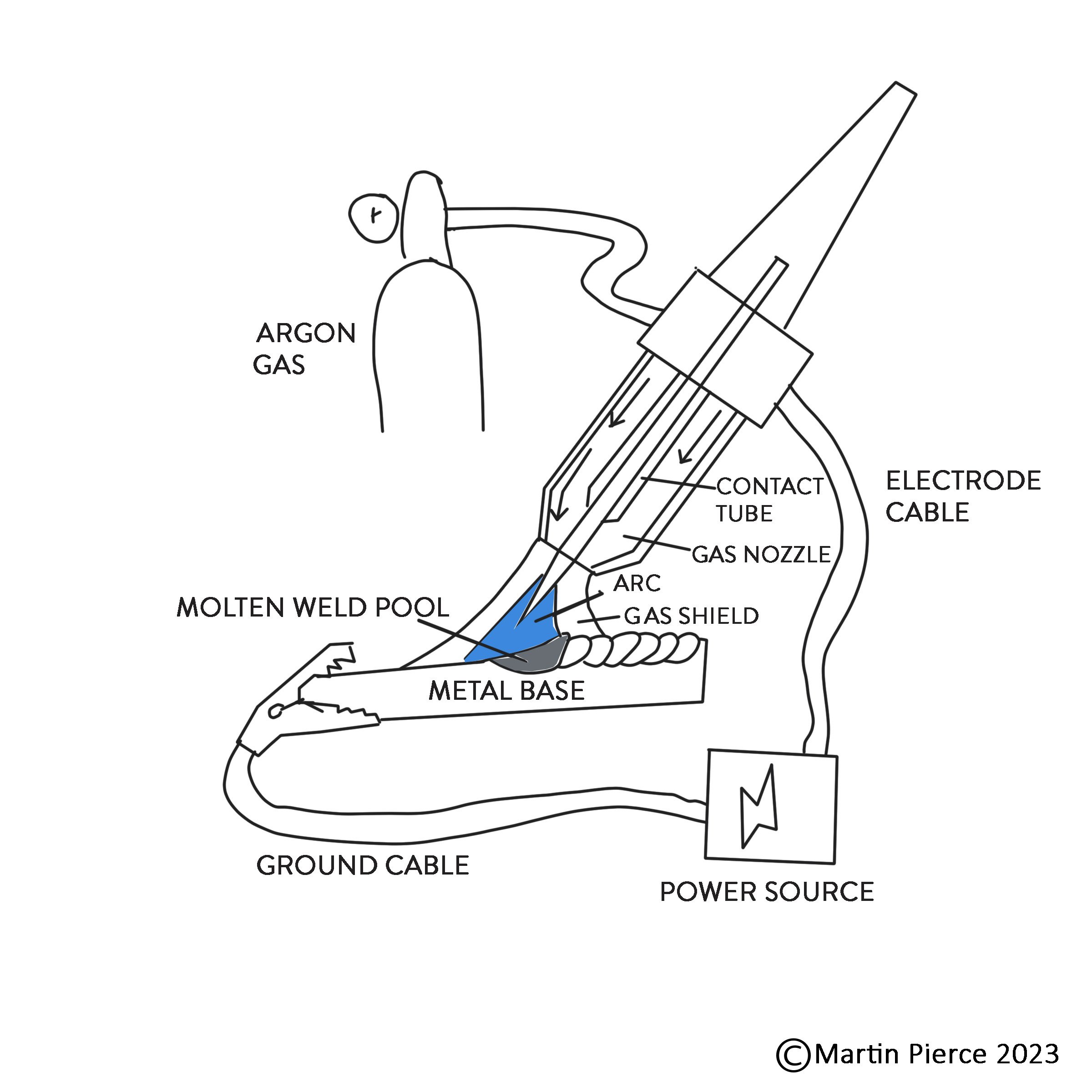One of the most challenging tasks when making bronze dog door handles is finding a way to capture the appearance of a breed where the hair color is key to the breed’s identity. This is particularly true for Yorkshire Terriers whose colors include the black, blue, tan and gold of the Black and Tan Terriers and Clydesdale Terriers from which they were bred. The color of the Yorkie also changes, with younger dogs showing more black and tan, that in older dogs fades to paler blues and gold.
While it may be possible to capture some of this color range with clever mixing of pigmented patinas the effect would be to create a “painted” contrived dog head which would detract from the beauty of bronze.
By studying many Yorkie photographs, Carlos, our patina expert, applies a dark patina solution of different intensity into the hair folds on the face and neck and highlights areas for contrast. While the patina does not replace the vibrant color of the Yorkies coat it does suggest the different color bands thereby adding realism.
In researching this breed, I happened upon a post “Famous Dogs in History” that documents the history of this small and very popular breed. While it is common knowledge that the breed was used to rid the Yorkshire coal mines and mills of rats they were also used as ratters in the trenches during WW1.
Yorkies today are the distant offspring of Huddersfield Ben, a show dog and productive stud who fathered many offspring until his demise in 1871. In the late 19th century when England’s coal mines and mills were driving the industrial revolution, the Yorkies popularity took off.
The silky coat, playful disposition and compact 7lb weight help explain why they are so popular and while they are energetic their size makes them less demanding than our large 65 lb. Pit Bull.

